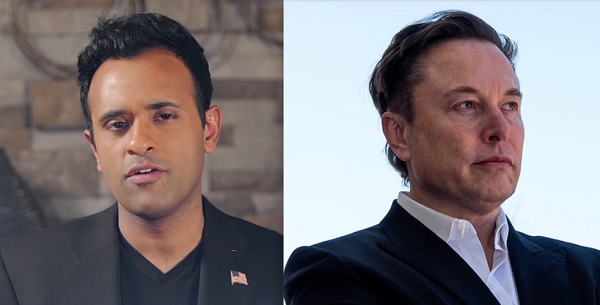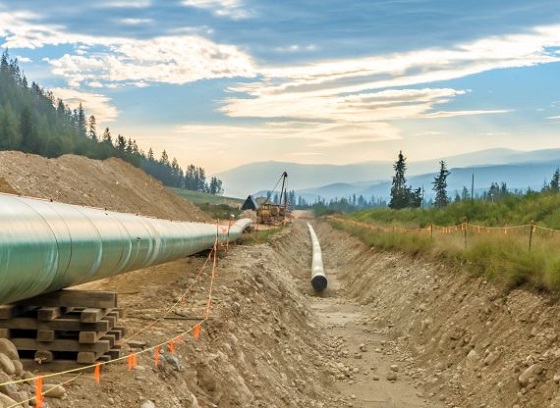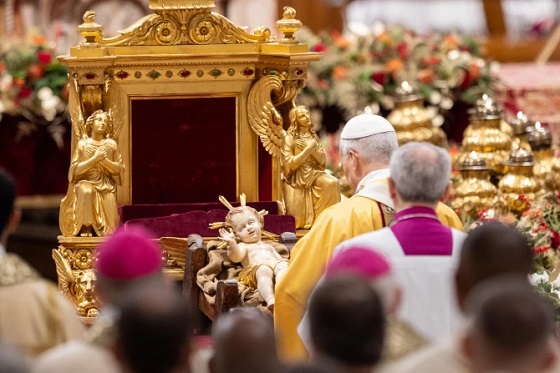Business
Chainsaws and Scalpels: How Governments Choose

Javier Milei in Argentina, Musk and Ramaswamy in the US.. What does DOGE in Canada look like?
Under their new(ish) president Javier Milei, Argentina cut deeply and painfully into their program spending to address a catastrophic economic crisis. And they seem to have enjoyed some early success. With Elon Musk now primed to play a similar role in the coming Trump administration in the U.S., the obvious question is: how might such an approach play out in Canada?
Sure. We’re not suffering from headaches on anything like the scale of Argentina’s – the debt we’ve run up so far isn’t in the same league as the long-term spending going on in South America. But ignoring the problems we do face can’t be an option. Given that the annual interest payments on our existing national debt are $11.7 billion (which equals seven percent of total expenditures), simply balancing the budget won’t be enough.
The underlying assumption powering the question is that we live in a world of constraints. There just isn’t enough money to buy everything we might want, so we need to both prioritize and become more efficient. It’s about figuring out what can no longer be justified – even if it does provide some value – and what’s just plain wasteful.
The Audit is a reader-supported publication. To receive new posts and support my work, consider becoming a free or paid subscriber.
Some of this may seem obvious. After all, when there are First Nations reserves without clean water and millions of Canadians without access to primary care physicians, how can we justify spending hundreds of millions of dollars funding arts projects that virtually no one will ever discover, much less consume?
Apparently not everyone sees things that way. Large governments operate by reacting to political, social, and chaos-driven incentives. Sometimes those incentives lead to rational choices, and sometimes not. But mega-sized organizations tend to lack the self-awareness and capacity to easily change direction.
And some basic problems have no obvious solutions. As I’ve written, there’s a real possibility that all the money in the world won’t buy the doctors, nurses, and integrated systems we need. And “all the money in the world” is obviously not on the table. So the well-meaning bureaucrat might conclude that if you’re not going to completely solve the big problems, you might as well try to manage them while investing in other areas, too.
Still, I think it’s worth imagining how things might look if we could launch a comprehensive whole-of-government program review.
How Emergency Cuts Might Play Out
Imagine the federal government defaulted on its debt servicing payments and lost access to capital markets. That’s not such an unlikely scenario. There would suddenly be a lot less money available to spend, and some programs would have to be shut down. Protecting emergency and core services would require making fast – and smart – decisions.
We would need to take a long, hard look at this important enumeration of government expenditures. There probably wouldn’t be enough time to bridge the gap by looking for dozens of less-critical million-dollar programs. We would need to find some big-ticket items fast.
Our first step might be to pause or restructure larger ongoing payments, like projects funded through the Canada Infrastructure Bank (total annual budget: $3.45 billion). Private investors might pick up some of the slack, or some projects could simply go into hibernation. “Other interest costs” (total annual budget: $4.6 billion) could also be restructured.
Reducing equalization payments (total annual budget: $25.2 billion) and territorial financing (total budget: $5.2 billion) might also be necessary. This would, of course, spark parallel crises at lower levels of government. Similarly, grants to settle First Nations claims (total budget: $6 billion) managed by Crown-Indigenous Relations and Northern Affairs Canada would also be at least temporarily cut.
All that would be deeply painful and trigger long-term negative consequences.
But there’s a far better approach that could be just as effective and a whole lot less painful:
What an All-of-Government Review Might Discover
Planning ahead would allow you the luxury of targeting spending that – in some cases at least – wouldn’t even be missed. Think about programs that were announced five, ten, even thirty years ago, perhaps to satisfy some passing fad or political need. They might even have made sense decades ago when they were created…but that was decades ago when they were created.
Here’s how that’ll work. When you read through the program and transfer spending items on that government expenditures page (and there are around 1,200 of those items), the descriptions all point to goals that seem reasonable enough. But there are some important questions that should be asked about each of them:
- When did these programs begin?
- What specific activities do they involve?
- What have they accomplished over the past 12 months?
- Is their effectiveness trending up or down?
- Are they employing efficiency best-practices used in the private sector?
- Who’s tasked with monitoring changes?
- Where are their reports published?
To show you what I mean, here are some specific transfer or program line items and their descriptions:
Department of Employment and Social Development
- Workforce Development Agreements ($722 million)
- Indigenous Early Learning and Child Care Transformation Initiative ($374 million)
- Payments to provinces, territories, municipalities, other public bodies, organizations, groups, communities, employers and individuals for the provision of training and/or work experience, the mobilization of community resources, and human resource planning and adjustment measures necessary for the efficient functioning of the Canadian labour market ($856 million)
Department of Industry
- Contributions under the Strategic Innovation Fund ($2.4 billion)
Department of Citizenship and Immigration
- Settlement Program ($1.13 billion)
Department of Indigenous Services
- Contributions to provide income support to on-reserve residents and Status Indians in the Yukon Territory ($1.05 billion). Note that, as of the 2021 Census, there were 9,150 individuals with North American Indigenous origins in Yukon. Assuming the line item is accurately described, that means the income support came to $114,987/person (not per household; per person).
Each one of those (and many, many others like them) could be case studies in operational efficiency and effectiveness. Or not. But there’s no way we could know that without serious research.
The Audit is a reader-supported publication. To receive new posts and support my work, consider becoming a free or paid subscriber.
Invite your friends and earn rewards
Business
Some Of The Wackiest Things Featured In Rand Paul’s New Report Alleging $1,639,135,969,608 In Gov’t Waste


From the Daily Caller News Foundation
Republican Kentucky Sen. Rand Paul released the latest edition of his annual “Festivus” report Tuesday detailing over $1 trillion in alleged wasteful spending in the U.S. government throughout 2025.
The newly released report found an estimated $1,639,135,969,608 total in government waste over the past year. Paul, a prominent fiscal hawk who serves as the chairman of the Senate Homeland Security and Governmental Affairs Committee, said in a statement that “no matter how much taxpayer money Washington burns through, politicians can’t help but demand more.”
“Fiscal responsibility may not be the most crowded road, but it’s one I’ve walked year after year — and this holiday season will be no different,” Paul continued. “So, before we get to the Feats of Strength, it’s time for my Airing of (Spending) Grievances.”
Dear Readers:
As a nonprofit, we are dependent on the generosity of our readers.
Please consider making a small donation of any amount here.
Thank you!
The 2025 “Festivus” report highlighted a spate of instances of wasteful spending from the federal government, including the Department of Health and Human Services (HHS) spent $1.5 million on an “innovative multilevel strategy” to reduce drug use in “Latinx” communities through celebrity influencer campaigns, and also dished out $1.9 million on a “hybrid mobile phone family intervention” aiming to reduce childhood obesity among Latino families living in Los Angeles County.
The report also mentions that HHS spent more than $40 million on influencers to promote getting vaccinated against COVID-19 for racial and ethnic minority groups.
The State Department doled out $244,252 to Stand for Peace in Islamabad to produce a television cartoon series that teaches children in Pakistan how to combat climate change and also spent $1.5 million to promote American films, television shows and video games abroad, according to the report.
The Department of Veterans Affairs (VA) spent more than $1,079,360 teaching teenage ferrets to binge drink alcohol this year, according to Paul’s report.
The report found that the National Science Foundation (NSF) shelled out $497,200 on a “Video Game Challenge” for kids. The NSF and other federal agencies also paid $14,643,280 to make monkeys play a video game in the style of the “Price Is Right,” the report states.
Paul’s 2024 “Festivus” report similarly featured several instances of wasteful federal government spending, such as a Las Vegas pickleball complex and a cabaret show on ice.
The Trump administration has been attempting to uproot wasteful government spending and reduce the federal workforce this year. The administration’s cuts have shrunk the federal workforce to the smallest level in more than a decade, according to recent economic data.
Festivus is a humorous holiday observed annually on Dec. 23, dating back to a popular 1997 episode of the sitcom “Seinfeld.” Observance of the holiday notably includes an “airing of grievances,” per the “Seinfeld” episode of its origin.
Alberta
A Christmas wish list for health-care reform

From the Fraser Institute
By Nadeem Esmail and Mackenzie Moir
It’s an exciting time in Canadian health-care policy. But even the slew of new reforms in Alberta only go part of the way to using all the policy tools employed by high performing universal health-care systems.
For 2026, for the sake of Canadian patients, let’s hope Alberta stays the path on changes to how hospitals are paid and allowing some private purchases of health care, and that other provinces start to catch up.
While Alberta’s new reforms were welcome news this year, it’s clear Canada’s health-care system continued to struggle. Canadians were reminded by our annual comparison of health care systems that they pay for one of the developed world’s most expensive universal health-care systems, yet have some of the fewest physicians and hospital beds, while waiting in some of the longest queues.
And speaking of queues, wait times across Canada for non-emergency care reached the second-highest level ever measured at 28.6 weeks from general practitioner referral to actual treatment. That’s more than triple the wait of the early 1990s despite decades of government promises and spending commitments. Other work found that at least 23,746 patients died while waiting for care, and nearly 1.3 million Canadians left our overcrowded emergency rooms without being treated.
At least one province has shown a genuine willingness to do something about these problems.
The Smith government in Alberta announced early in the year that it would move towards paying hospitals per-patient treated as opposed to a fixed annual budget, a policy approach that Quebec has been working on for years. Albertans will also soon be able purchase, at least in a limited way, some diagnostic and surgical services for themselves, which is again already possible in Quebec. Alberta has also gone a step further by allowing physicians to work in both public and private settings.
While controversial in Canada, these approaches simply mirror what is being done in all of the developed world’s top-performing universal health-care systems. Australia, the Netherlands, Germany and Switzerland all pay their hospitals per patient treated, and allow patients the opportunity to purchase care privately if they wish. They all also have better and faster universally accessible health care than Canada’s provinces provide, while spending a little more (Switzerland) or less (Australia, Germany, the Netherlands) than we do.
While these reforms are clearly a step in the right direction, there’s more to be done.
Even if we include Alberta’s reforms, these countries still do some very important things differently.
Critically, all of these countries expect patients to pay a small amount for their universally accessible services. The reasoning is straightforward: we all spend our own money more carefully than we spend someone else’s, and patients will make more informed decisions about when and where it’s best to access the health-care system when they have to pay a little out of pocket.
The evidence around this policy is clear—with appropriate safeguards to protect the very ill and exemptions for lower-income and other vulnerable populations, the demand for outpatient healthcare services falls, reducing delays and freeing up resources for others.
Charging patients even small amounts for care would of course violate the Canada Health Act, but it would also emulate the approach of 100 per cent of the developed world’s top-performing health-care systems. In this case, violating outdated federal policy means better universal health care for Canadians.
These top-performing countries also see the private sector and innovative entrepreneurs as partners in delivering universal health care. A relationship that is far different from the limited individual contracts some provinces have with private clinics and surgical centres to provide care in Canada. In these other countries, even full-service hospitals are operated by private providers. Importantly, partnering with innovative private providers, even hospitals, to deliver universal health care does not violate the Canada Health Act.
So, while Alberta has made strides this past year moving towards the well-established higher performance policy approach followed elsewhere, the Smith government remains at least a couple steps short of truly adopting a more Australian or European approach for health care. And other provinces have yet to even get to where Alberta will soon be.
Let’s hope in 2026 that Alberta keeps moving towards a truly world class universal health-care experience for patients, and that the other provinces catch up.
-

 armed forces12 hours ago
armed forces12 hours agoOttawa’s Newly Released Defence Plan Crosses a Dangerous Line
-

 espionage11 hours ago
espionage11 hours agoCarney Floor Crossing Raises Counterintelligence Questions aimed at China, Former Senior Mountie Argues
-

 Health10 hours ago
Health10 hours agoAll 12 Vaccinated vs. Unvaccinated Studies Found the Same Thing: Unvaccinated Children Are Far Healthier
-

 Energy13 hours ago
Energy13 hours ago75 per cent of Canadians support the construction of new pipelines to the East Coast and British Columbia
-

 Energy2 days ago
Energy2 days ago‘The electric story is over’
-

 Business2 days ago
Business2 days agoSome Of The Wackiest Things Featured In Rand Paul’s New Report Alleging $1,639,135,969,608 In Gov’t Waste
-

 Opinion10 hours ago
Opinion10 hours agoPope Leo XIV’s Christmas night homily
-

 Energy1 day ago
Energy1 day agoWestern Canada’s supply chain for Santa Claus








